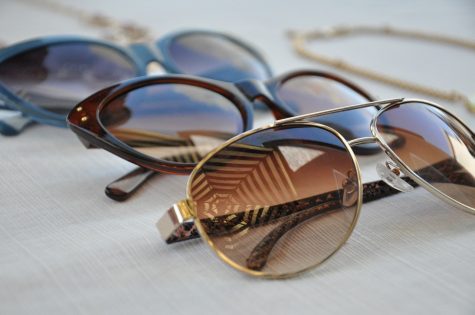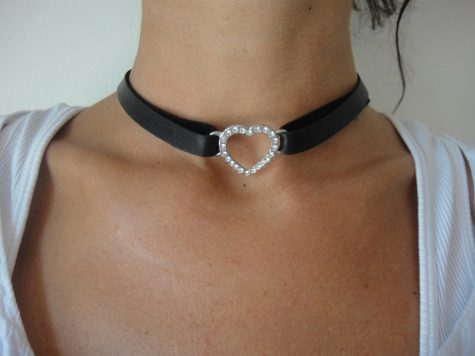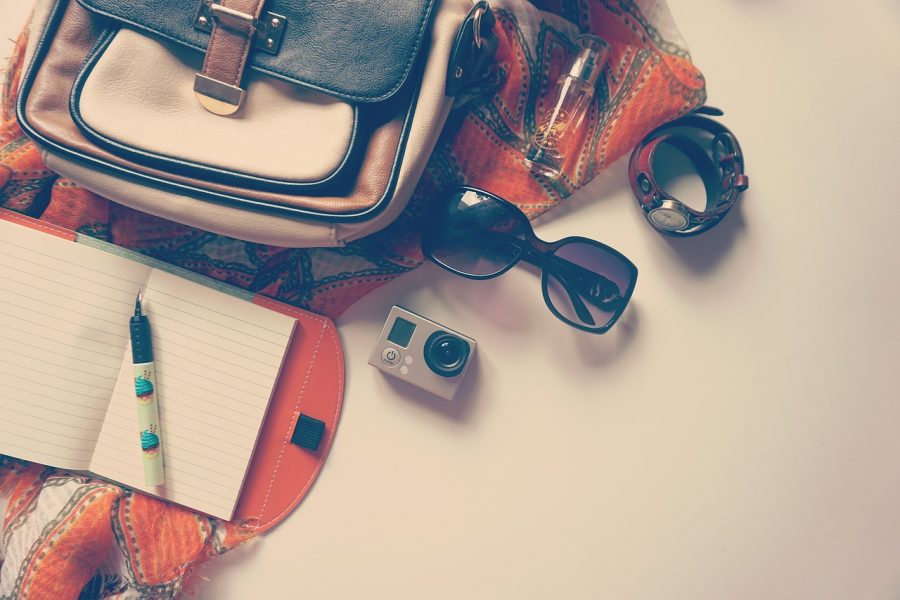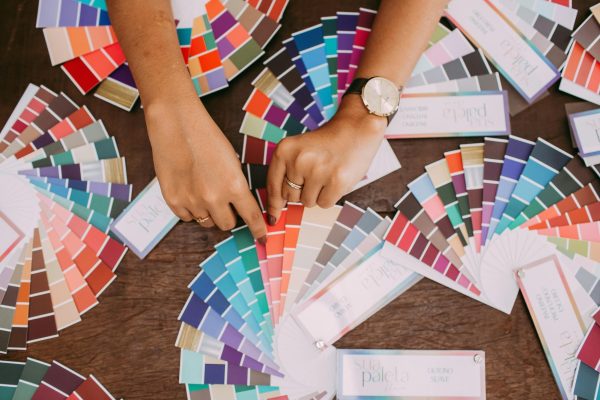Looking Back – The History Behind Our Favorite Fashion Accessories
Fashion has always been an integral part of culture and is a powerful tool of self-expression. This is why some fashions items are passed down to further generations in different forms and styles. Thus, there are many accessories that have lived with human culture for a long period of time, accumulating an engrossing history along the way. We have selected three of these common fashion items that originate from hundreds of years ago, and have explored how they have evolved through time to become what we know them to be today.
Sunglasses
Early sunglasses weren’t made to block the rays of the sun. The history of sunglasses begins with the Roman Emperor Nero, who watched the gladiator competitions through polished light emerald green gems held up right in front of his eyes. This origin continues to the first sunglasses in China during the 12th century or possibly earlier. They were used by judges in ancient Chinese courts. Made out of smoke colored flat quartz lenses, they were used to conceal the judges’ expressions from showing in the court when interrogating witnesses. However, they had no corrective powers nor blocked harmful UV rays.
In the following early 1900s, modern-type sunglasses evolved. They became more widespread, especially among the Hollywood movie stars. Moreover, inexpensive mass production of sunglasses started in 1929, when sunglasses were introduced to America. On the beaches of Atlantic City, New Jersey, Sam Foster sold the first sunglasses under the name Foster Grant from a Woolworth on the Boardwalk. These sunglasses were made to protect people’s eyes from the sun’s rays. Polarised sunglasses became available when Edwin H. Land incorporated his patented Polaroid filter. Furthermore, Sunglasses played a noteworthy role during the World War II, when anti-glare aviator style sunglasses using polarisation was invented by Ray Ban. Ray-Ban Aviator sunglasses became popular with celebrities and community in 1937.
Various sunglasses designs and styles became the trend, representing the era. In the 1950s, Cat eye sunglasses and Browline sunglasses were the trend. In the 1960s, Retro Square sunglasses and oversized sunglasses were popular, whereas in the 1970s tinted lenses and square framed sunglasses were loved. Furthermore, in the 1980s, shield sunglasses and aviator sunglasses arose, with sport sunglasses and round sunglasses in the 1990s. Sunglasses are one of those fashion items that are trendy but also pragmatic, which is probably the reason why has been and still is loved by everyone.
Chokers
Chokers, now trendy fashion accessories, also have a fascinating history behind them. The basic framework of a choker, which is characterized by a necklace that is tight on the neck, evolved differently in different cultures. In the Native American culture, chokers were wide and were made of bone, glass beads, or shells. In this culture, chokers functioned as a method of neck protection for warriors and as a part of the traditional dress for tribal ceremonies. In East Africa, on the other hand, chokers symbolized relationships, especially representing married women. They would wear chokers almost everyday as a symbol of their marriage, and their wealth through the size of their necklaces. In Europe, it is seen that the start of chokers started during the French Revolution in the 18th century. In drawings from that time period, women are sometimes depicted as having a red ribbon tied around their neck and upper back in an “x” shape. They wore these red ribbons to pay homage to those who died at the guillotine.
Chokers started to evolve further as time passed. In the 1860s, a black ribbon tied to the neck was a sign that the woman wearing it was a prostitute. However, a few decades later, this item became a royal trend. During the late 19th century, chokers become a fashion accessory of the elite and the privileged, mainly due to the influence of Alexandra, Princess of Wales. Known to travel often to India, she was inspired by the heavy jewelry worn by the people there and started to wear thick rows of pearls herself. Her choker not only was a beautiful piece, but was also a method of covering a scar on her neck. As she wore it, the trend dissipated amongst women in the elite class who had the necklaces made to fit their necks perfectly, making chokers an expensive item. The materials that were used were pricy as well; diamonds, pearls, and velvet were mainly used during this era.
 In the 20th century in the US, chokers became trendy once more, with the introduction of the now-common “tattoo” plastic chokers. Gothic fashion often took a form of choker, called “dog collars.” In the current day, chokers come in many different shapes and sizes, using materials ranging from leather to jewels. The most usually worn chokers are simple black ones with single jewel designs, or even ones without the jewel decoration. The designs are much more simple than those of past eras, but we never know-fashion is always repeating itself.
In the 20th century in the US, chokers became trendy once more, with the introduction of the now-common “tattoo” plastic chokers. Gothic fashion often took a form of choker, called “dog collars.” In the current day, chokers come in many different shapes and sizes, using materials ranging from leather to jewels. The most usually worn chokers are simple black ones with single jewel designs, or even ones without the jewel decoration. The designs are much more simple than those of past eras, but we never know-fashion is always repeating itself.
High heels
Today, high heels are a form of footwear worn almost exclusively by women. Yet, the history of high heels shows that this was not always the case. Until around 1660, men’s and women’s shoe styles were roughly the same. After that point, men’s shoes tended to be more practical, while women’s shoes became more ornate.
Well before high heels became women’s fashion, they were used in the 16th century by Persian soldiers on horseback. As the shoes gave the soldiers stability in the stirrups, they could use their bow and arrows more efficiently. It is now thought by historians that the high heel was shaped in such a way as to make riding on horseback easier. This proved to be efficient for soldiers, who could use the heels to more safely stand up on their stirrups as they rode. This method of using high heels to strengthen an army was employed by the Persian Empire under the Safavid dynasty, and it was proved to be hugely successful. Later, the shoes became a status symbol and the heels were extended to make the men look even taller.
Not to be outdone, women of the 1600s started wearing heels as a way of showing their equality. Elizabeth Semmelhack, a curator of the Bata Shoe Museum in Toronto and author of Heights of Fashion, a History of the Elevated Shoe, said that the rage of that period in parts of Europe was for women to dress and act like a man. As usually happens, high fashion is adapted into more affordable versions and filters down to the less fortunate. So women in the lower classes started wearing high heels as well. Seeing this, the elite responded by making their heels increasingly higher to maintain the distinction of being upper class because the higher the heel, the more expensive the shoe typically was.
Eventually, men got away from the heel almost completely to show their distinction from women. Since the late 18th century, men’s shoes have had primarily low heels, except for cowboy boots and some shoes worn by rock stars, who occasionally have a propensity to wear effeminate garb similar to before the “Great Male Renunciation”, when men switched from wearing jewelry and elaborate outfits with highly decorated cloth to drab, darker colored simple clothing. Basically, Western men on the whole stopped trying to beautify themselves, starting at the tail end of the 18th century.







Rhiannon Wood • Dec 4, 2016 at
Soldiers in high heels – now there’s an image to conjure with!